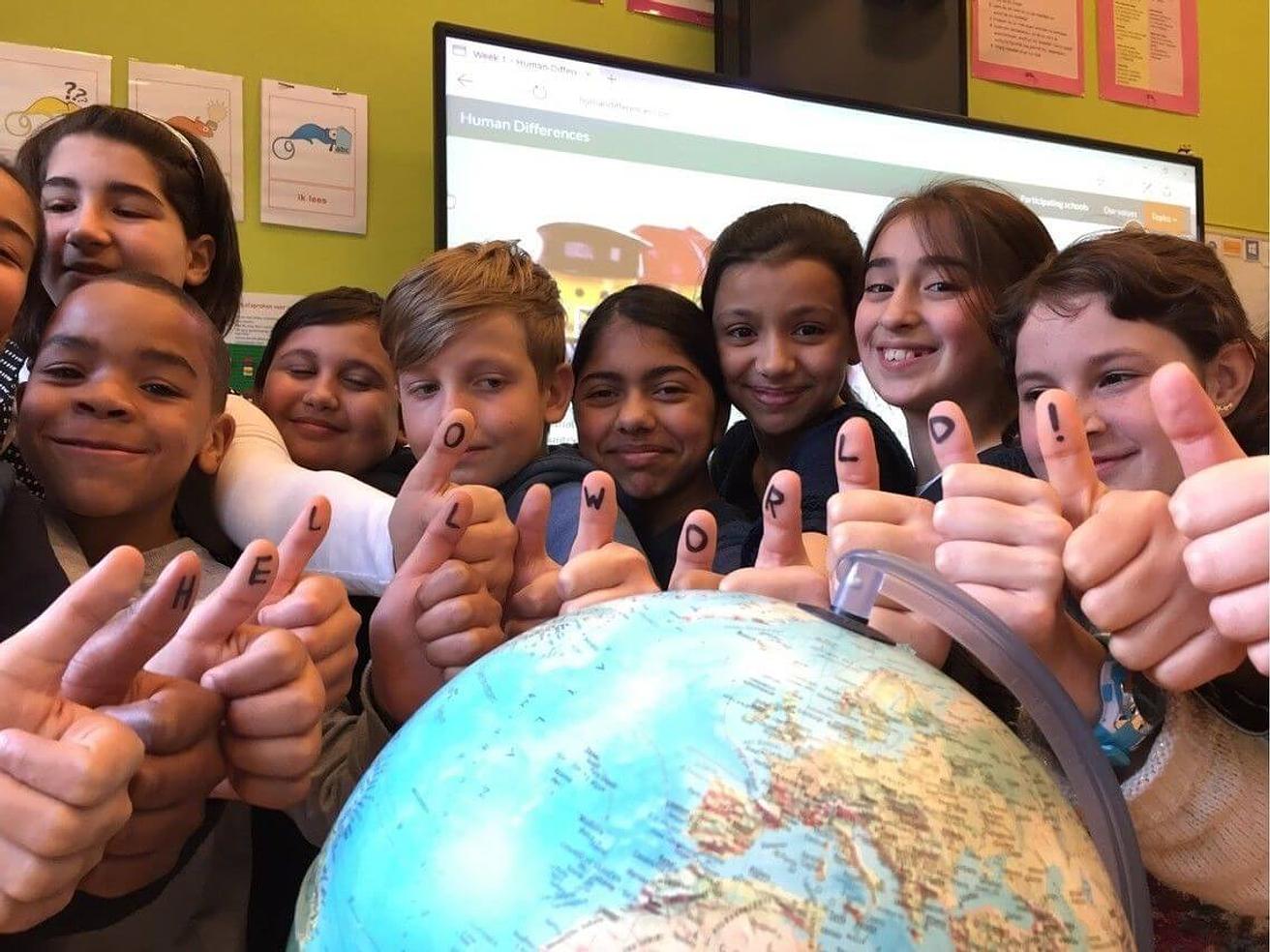All around the world you’ll find schools, classrooms, teachers and learners. Education is a truly global practise. Yet, while countless companies and offices have adopted a global mindset and use technology to create an international network, learners are often isolated from other schools in their community, let alone those around the world. Children learning about global issues like poverty, environmentalism and intercultural awareness might just be missing out on the best resource for learning - each other!
Innovative educators are out to change this, like Koen Timmers, Innovator and Top 10 Finalist for this year’s Global Teacher Prize. Timmers is the brain behind Global Learning, an initiative that brings together learners over the world to collaborate on ambitious projects addressing pressing real-life challenges.
Being recognized as one of the Top 10 teachers in the world was “fun, life changing and intense”, explained Timmers. “It really meant a lot to be a top 10 finalist. It was a really nice confirmation for the hard work of the last years. It brought me in contact with lovely and inspiring educators around the world, I had a lot of media attention in Belgium and I was interviewed by media across 15 countries in Dubai and I was able to talk to public figures... But the most heartwarming was receiving so many messages from people around the world – teachers claiming I changed the way they teach. Is there anything more awesome than this?”
As a Computer Science teacher, Timmers appreciates the power and potential of technology to make learning a global experience. While Timmers loves teaching his classes in Belgium, he wanted to reach more learners and connect children around the world, so set to work establishing a variety of international school projects focused around the United Nations Sustainable Development Goals (SDGs), a set of 17 goals to end poverty, protect the planet and ensure prosperity for all.
Timmers admits that expanding his scope globally hasn’t always been easy. In 2015, Timmers launched a project connecting international teachers with classrooms in Kakuma Refugee Camp in Kenya, via Skype. It was a dire situation back then, with one teacher per 200 students, no computers and no reliable power supply, so Timmers had to establish his own infrastructure there to make his dream a reality.
“When I launched the Kakuma project very few people believed I could do it. After one year I was on my own. People thought I was nuts. At the same moment my private laptop I sent to the camp disappeared and the agency which shared internet connectivity and power supply lost interest. But I learned never to give up. I can now proudly say we have 175 global educators across 50 countries willing to teach the African students in the Kakuma refugee camp for free via Skype. And this group is growing on a daily basis. Thanks to being a Global Teacher Prize finalist I'm being invited to do keynotes in 15 countries and I get the chance to share our message.”
There are so many reasons to get involved with Global Learning. Connecting with international peers can broaden learners' perspectives, encouraging them to celebrate diversity, inclusivity and open-mindedness, while basing projects on the SDGs encourages learners to think creatively about some of the most pressing issues facing society today, promoting awareness and a proactive approach to addressing global challenges. Timmers explains the difference a global approach to learning makes, saying: “Formal education tends to be restricted to memorization, knowledge acquisition and examination. We are learning about global issues via textbooks instead of making a connection to students living in those countries. Thanks to projects like Climate Action, the Kakuma project and the Innovation project, tens of thousands of students and teachers across 6 continents are able to explore, brainstorm, create, connect, present and share their findings about global issues and specific SDGs.” Global Learning can help social cohesion and empathy within and beyond the classroom, as learners from all backgrounds see they share common problems and solutions.
Global Learning lends itself perfectly to multidisciplinary learning, tackling broad topics that encompass a range of subjects. Collaborating globally offers a way for young people to see the world from many different perspectives, work with other students from all over the globe and tackle some of the most important challenges facing our planet today. In doing so, learners gain valuable skills such as problem-solving, teamwork, creative thinking and communication. Learners are encouraged to think innovatively and work together to have a positive impact on the world around them - a truly empowering learning experience.
Educators that are keen to get involved should check out the upcoming Innovation project, which so far involves teachers and students from over 400 schools in more than 80 countries and boasts the support of Charlize Theron, Greenpeace, Unesco and other international public figures. Timmers explains, “The project is student-centered and teachers are asked to shift from instruction to guiding their students. Collaboration is key. Students will explore, brainstorm, discuss, create, present and share findings via weekly videos on the website. This way students will learn from each other in their classroom and then in the next stage from their global peers.”
Over the course of a month the learners will focus on 4 topics relating to their particular chosen SDG. Teachers can easily see which other schools around the world are focusing on the same SDG, making it quick and easy to connect with a partner school. Collaboration and sharing is key, so in the last week the students will be able to connect via Skype and experts will share their expertise during master classes.
In this increasingly connected world, it's vital that educators can connect children with others to normalize international relationships and prepare them to be successful adults in a globalized working world. Global Learning breaks down the four walls of the classroom, bringing global issues to life. As Koen Timmers says, “What can possibly be better than learning about global issues directly from each other?”
Open up your classroom to the world now by signing up to the upcoming Innovation Project or registering to teach refugee children as part of the Kakuma Project.



